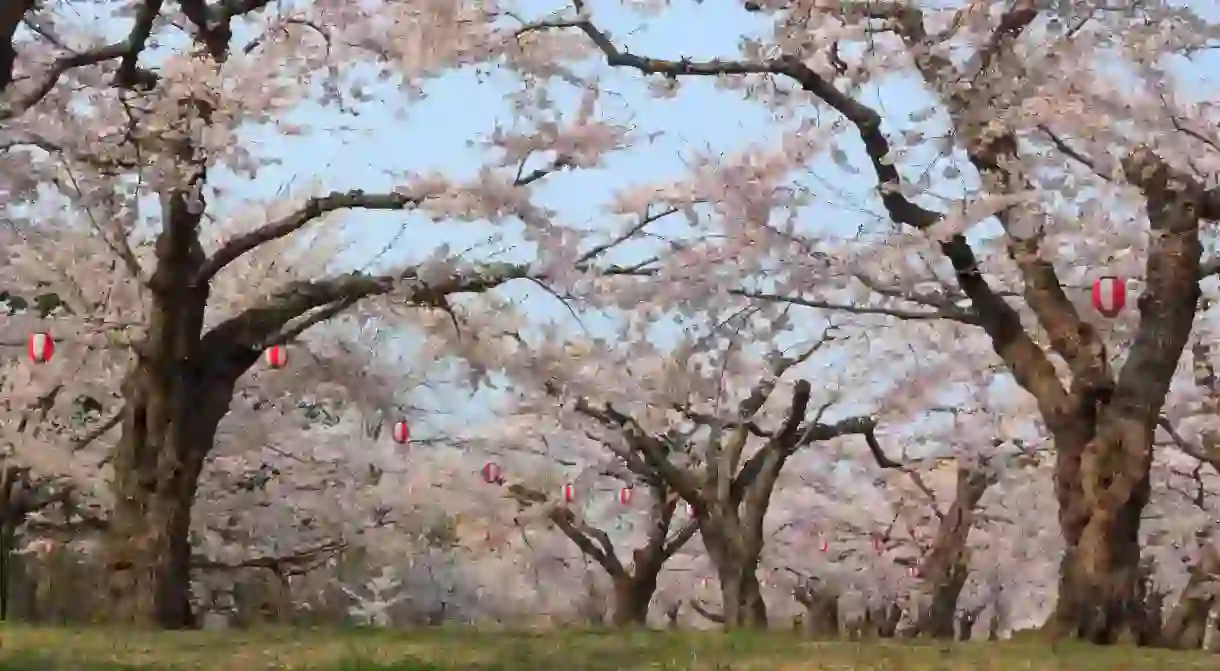Discover Hakodate’s Outdoors With These Activities, Including a Hike Up an Active Volcano

Hokkaido – the northernmost of Japan’s five main islands – is renowned for its frigid winters. But while the ski slopes of Niseko, Rusutsu and Tomamu might be the island’s most famous outdoor experiences, southern Hokkaido’s Hakodate offers some sunnier scenery during the warmer months.
Mount Hakodate – the southern tip of this port city that boomed in the newly open Japan of the 1850s – is this town’s biggest attraction, literally and figuratively. And beyond this wooded waterfront peak, this corner of the Oshima Peninsula is peppered with parks, hot springs and unspoiled coastline to enjoy in the fresh air. Read on for the best things to do outdoors in Hakodate.
Hike up Mount Hakodate
Hakodate’s crowning natural feature is accessible by car, bus and scenic cable car. However, on a clear summer’s day, nothing beats lacing up the walking shoes and tackling Mount Hakodate on foot. Well-marked paths connect the Mount Hakodate Information Centre at the bottom with the lofty peak more than 300m (984ft) higher up. The views are most dazzling at sunset when the city lights begin to sparkle between the Tsugaru Strait and Hakodate Bay.

Smell the rugosa roses at Cape Tachimachi
Southeast of the mountain’s summit sits Cape Tachimachi, showing off rugged cliffs towering 30m (98ft) above the water. Hop off the tram at Yachigashira Station – the end of the number 2 line – and then wander past the Jizodo Shinto shrine plus the graves of legendary poet Ishikawa Takuboku and his family to reach the cape. The Aomori prefecture on the Honshu mainland is within sight on a clear day, while bright pink hamanasu or rugosa roses – the flower of Hokkaido – lighten up the outlook during summer.

Spot a red fox at Onuma Quasi-National Park
This quasi-national park is beautiful in all seasons, with cherry trees blossoming in spring, autumnal leaves glowing in fall and serene, island-dotted lakes shimmering in summer. And the lakes are just as special when they freeze over in winter, allowing red foxes to scamper over them. Warmer weather invites visitors to see Onuma (large lake) and Konuma (small lake) by canoe, but when Hokkaido’s bitter cold sets in, snowshoes help navigate the knee-high snow that shrouds this winter wonderland.

Explore the ‘green island’ Midori no Shima
This man-made island in Hakodate’s harbour is one of the city’s leafy green urban retreats. Midori no Shima (Green Island) is covered with a lush lawn behind the ornamental ship’s mast on the island’s central square, a reminder of this town’s rich nautical heritage. A promenade surrounds Midori no Shima, providing views of the boats bobbing in the water as well as Hakodate Bay beyond. It’s open from 9am to 6pm daily.

Reach the summit of an active volcano
An hour’s drive east of Hakodate is where you’ll find Mount Esan – an active volcano and one of southern Hokkaido’s great natural landmarks. Well-paved trails lead hikers 618m (2,028ft) to the summit, which billows sulphur and flowers in equal measure. At its base, Mizunashi Kaihin Onsen is also one of the region’s most unique hot springs – two natural pools emerge at low tide, blending frosty ocean waves with steamy mineral water along a stretch of pristine coastline.

See the hot-tubbing monkeys at Yunokawa Onsen
A string of hot springs hug the coast east of the city centre, and there are even public foot baths sprinkled along the streets that connect the different resorts of Yunokawa Onsen. But for a completely different outdoor experience, check out Hakodate Tropical Botanical Garden. The greenhouse is full of 3,000 exotic specimens sourced from around the globe, but the stars of the show are the hot-tubbing monkeys, which lap up the steam of their own mineral baths between December and Golden Week in May.

Discover an old fort at Shinoridate
A little farther east along the coast lies an old fort sandwiched between the airport and the Tsugaru Strait. Although Shinori Fort might not look like much more than a field, this 14th-century stronghold is the most easterly of southern Hokkaido’s 12 fabled fortresses and the discovery site of numerous Medieval copper coins, which are now on display at the Hakodate City Museum. Shinoridate itself contains a museum and a Shinto shrine, and although the fort isn’t as well preserved as the far more famous Goryōkaku, it still among Hakodate’s top outdoor activities.
Eat some yakitori under the trees at Hakodate Park
What Hakodate Park lacks in size, it makes up for in atmosphere during cherry blossom season, when yakitori (skewered chicken) stands sizzle beneath the rows of blooming cherry trees. At the foot of Mount Hakodate, next to the Aoyagicho Station, walking paths wind around this Western-style park’s central fountain, shaded by petals during sakura season. Hakodate Park also features a monument to the poet Ishikawa Takuboku, the Children’s World amusement park and the Hakodate City Museum for history buffs.

Marvel at autumn leaves in Kosetsuen Park
Cherry blossoms also bloom in this reserve – also known as Miharashi Park – each spring. But autumn is Kosetsuen Park’s season to shine. This 19-hectare (46-acre) space on the northeastern edge of Hakodate is home to more than 150 varieties of trees – providing leafy surrounds for the old-school Japanese residence at its heart and the vast maze of walking trails that snake around it – which are particularly beautiful when the foliage flares red in autumn.














